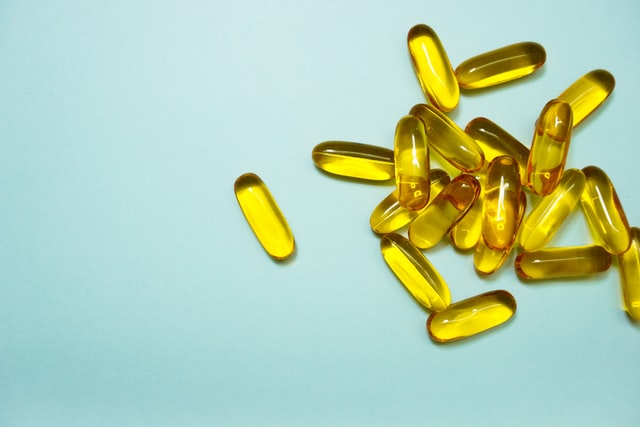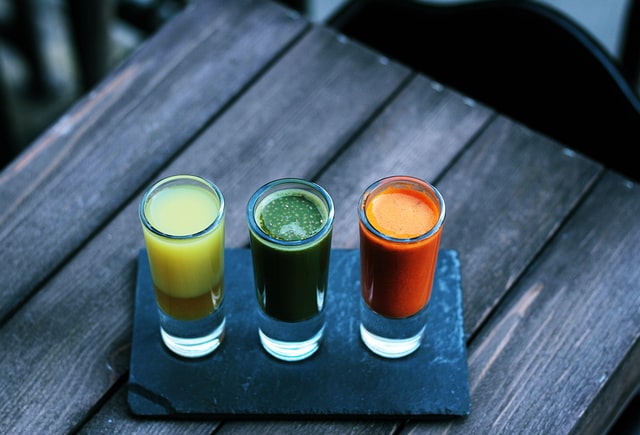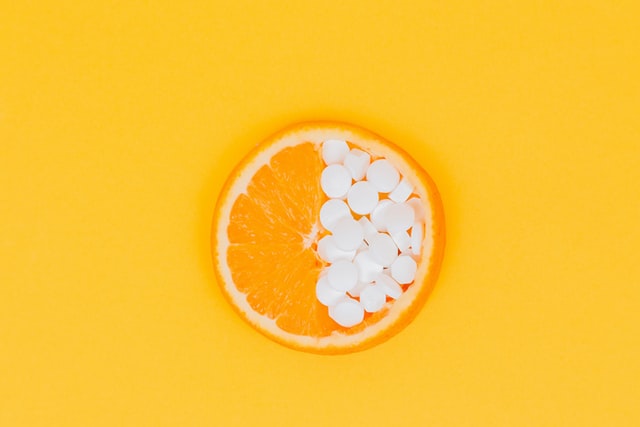Pre-workout pills have grown nearly as popular as protein among gym-goers. However, much like protein supplements, not every pre-workout product is the same, and not every pre-workout product is appropriate for every athlete. Each has various substances in varying amounts with varied intended benefits, and they may be better suited to different sorts of athletes with other objectives.
A solid pre-workout may be your ally, whether you want to establish a new PR, accomplish a few more reps, or get the most out of your cardio.
We’ll go over how to pick the best pre-workout for you and get the most out of it in the following tutorial. Educate yourself so that you may be certain that your pre-workout will help you achieve your fitness objectives.
What Is The Purpose Of A Pre-Workout Supplement?
Pre-workout supplements are made up of all the substances that individuals take to improve the effectiveness of their exercises. As the name implies, it’s something you do before a workout, game, or match.
In the article “The Science Behind the Best Pre- and Post-Workout Supps,” Dwayne Jackson, Ph.D., states that “in the hour before training, you should be focused on priming your internal environment for intense physical—and mental—work.” “As a result, pre-workout supplements should enhance your mind and body to perform at your best.”
However, “optimization” can refer to a variety of things. Pre-exercise vitamins might help you have more energy or focus throughout your workout. They can, however, provide unique bodily advantages. For example, during an all-out effort, like a heavy rep test on the “big three” during Layne Norton’s PH3 Power and Hypertrophy program, one athlete could welcome the greater pain tolerance or force production it delivers. Another could like the stamina gained with Kris Gethin’s 8-Week Hardcore Trainer, which allows them to complete a few more repetitions in high-volume DTP sets. Vasodilators and other substances can promote recovery and endurance by increasing blood flow to muscle tissue.
Caffeine, beta-alanine, leucine or BCAAs, and nitric oxide boosters like Nitrosigine, arginine, or citrulline are all principal constituents in today’s popular pre-workouts, and they all appear to aid enhance blood flow and the “pump” feeling while lifting. New mixes with new ingredients, on the other hand, are released regularly.
There are two types of pre-workouts: those that include stimulants and those that do not. Caffeine is almost usually present at variable levels, but other stimulants such as yohimbine, theacrine (Teacrine being the most prevalent), guarana, and others may also be present. Many supplement firms have introduced stimulant-free pre-workouts for caffeine-sensitive people who don’t want it or exercise close to sleep.
Plenty of options are available if you’re searching for a pre-workout that will get you pumped and ready to go. If that’s not what you desire, you still have options. On the other hand, many pre-workouts are in the center, containing no more caffeine than a cup of tea or coffee.
This is why it’s critical to read labels, read plenty of user reviews, and get pre-workout supplements from well-known, reliable suppliers.
Are Pre-Workout Supplements Effective?
It all depends on why you’re taking them. Some people believe that taking a pre-workout will make them larger, stronger, or quicker, and it’s unlikely, but it can undoubtedly assist you in completing a crucial workout. And, over time, crushing a lot of exercises will certainly help you become larger, stronger, and quicker!
Remember that the primary goal of pre-workouts is to provide you with the energy, stamina, and attention necessary to do the activities that will help you achieve both of these objectives.
According to several studies, most specific chemicals in today’s most popular pre-workouts give some advantage in strength, endurance, or muscular building. However, those subjects’ training histories and exercises may differ vastly from yours.
A pre-workout can help you have a better workout, in a nutshell. But the truth is that it’s only one of many factors. Make sure you have the proper training. Create a strong nutritional basis. Make the most of your recovery by getting lots of rest. Then, to assist you in finishing the remaining 5% of the job, take vitamins!
What Are the Ingredients in High-Quality Pre-Workout Supplements?
The label on some pre-workouts appears to be straightforward, and it’s a laundry list of difficult-to-pronounce terms and mysterious-sounding “blends” or “matrixes” in other circumstances. Plus, with so many brands and items to choose from, it’s difficult to tell what sets one apart.
It’s always best to keep things simple, especially as well as how they might help you work out better:
Caffeine is number one.
Caffeine is often regarded as the ideal training companion for weightlifters and other athletes and a good reason. In the article “Boost Your Workout With Caffeine,” Robert Wildman, Ph.D., RD, RISSN, writes, “Study after study has shown that caffeine can increase alertness, sharpen focus, improve tolerance for exercise-induced pain, help burn fat, and help athletes do more work for longer periods in the gym and sport.”
Caffeine offers you a burst of energy that you may use for both endurance and high-intensity tasks like lifting or sprinting. It’s been demonstrated to improve maximum strength, power, endurance, and even muscular soreness[1].
Does it appear to be effective? It most certainly is. “Caffeine is so effective that the World Anti-Doping Agency prohibited its usage until 2004,” explains Wildman.
Fortunately, the restriction was lifted, and now “more than 75% of professional athletes frequently consume caffeine during competition,” according to him. And the rest of us do, too—nearly 80% of Americans consume caffeine regularly!
Some people are caffeine-sensitive regardless of the amount, while others appear to be unconcerned by the physiological consequences. Caffeine tolerance can be developed. However, this does not negate the benefits of caffeine in terms of physical performance[2,3]. Some people believe they’ve created a tolerance to the substance they’re using, so they switch pre-workouts every few months to see if a “change of scenery” will help.
Please be advised that caffeine-sensitive individuals should avoid or restrict caffeine intake after 4 p.m. (assuming you are not an overnight worker), as it may disrupt sleep or sleep quality. Non-caffeinated goods are likely a better alternative for caffeine-sensitive people who work out late at night.
2. Branched-chain amino acids (BCAAs) or essential fatty acids (EAAs)
The branched-chain amino acids leucine, isoleucine, and valine aid you by regulating protein metabolism, boosting protein synthesis, and lowering protein breakdown, as long as you eat enough calories and protein. In other words, BCAAs assist you in gaining muscle while reducing muscle injury. They can help minimize mental and physical weariness during a workout by reducing delayed onset muscle soreness (DOMS) by reducing delayed onset muscle soreness (DOMS). [4]
The 2:1:1 BCAA ratio—two parts leucine to one part isoleucine and one part valine—is the most popular and scientifically supported. According to a study, you want more leucine since it’s the greatest amino for boosting muscle protein synthesis. If a ratio isn’t listed, seek at least 3 grams of leucine per serving if the brand you’re considering doesn’t.
Essential amino acid blends, or EAAs, provide all of the advantages of BCAAs and are becoming increasingly popular in pre-workouts and standalone amino mixes. BCAAs are, after all, part of the EAAs. The EAAs are made up of the three BCAAs and six more amino acids that your body cannot make on its own. Exercise physiologist Nick Coker lists EAAs as one of the top three supplements for mass gain in his article “The Top 3 Supplements for Gaining Mass.”
3. Alanine (Beta-Alanine)
Beta-alanine is a common pre-workout supplement with a single goal: to help you get through that “burning” feeling and get a few more repetitions out of each set.
Acidity can build up in your body when high-intensity activities, causing muscular fatigue and lowering performance. Beta-alanine binds to histidine to increase amounts of carnosine, an amino acid that buffers the hydrogen ions that create these acids, allowing you to retain your intensity for longer. To put it another way, a larger volume equals more profits. [5] Supplement expert Chris Lockwood, Ph.D., CSCS, call beta-alanine “probably the most consistently effective performance-enhancing supplement to hit the sports nutrition market since creatine” in his article “Your Expert Guide to Beta-Alanine,” and says “beta-alanine is an ingredient I strongly recommend athletes keep in their arsenal.”
If you take a higher amount of beta-alanine, such as that found in many pre-workout supplements, you will most likely feel tingling in your neck and face. This is known as “paresthesia,” Many people think it is as much as the caffeine the first time they take a pre-workout. Scientists aren’t sure why some people have paresthesia after ingesting beta-alanine, but it’s safe and only lasts a few minutes.
However, the benefits of beta-alanine come with a catch: it must be taken continuously for 2-3 weeks before seeing effects. Fortunately, you don’t have to take beta-alanine before a workout. It will deliver the same advantages with less tingling if you take it in smaller dosages throughout the day. The International Society of Sports Nutrition suggests a daily intake of 4-6 grams of beta-alanine, divided as needed.
4. Nitric Oxide Supplements
These pre-workout substances help you achieve a serious pump during high-rep lifting by increasing blood flow to your muscles.
L-arginine was once the most used NO booster, but it is now very uncommon on its own. Many different compounds can aid with NO generation today, but the non-essential amino acid citrulline, in L-citrulline or citrulline malate, is perhaps the most common.
Boosters of Nitric Oxide
Watermelon contains L-citrulline, which is the natural form of citrulline. It helps increase nitric oxide levels, which can assist widen blood vessels and provide more oxygen and nutrients to muscles. Citrulline malate also aids in ammonia clearance, a chemical linked to exercise-related exhaustion, according to nutritional consultant Mike Roussell, Ph.D.’s article “Citrulline Malate: The Fatigue Fighter.”
L-citrulline malate is L-citrulline that has had malic acid (or “malate”) added to it. Apart from the citrulline’s increased blood flow, “Malate is also known to have fatigue-fighting qualities of its own, by aiding the body’s natural capacity to recycle exercise-generated lactic acid and utilize it for energy,” according to Roussell. This two-for-one combination can lead to increased workout endurance (i.e., more reps before failure) and even reduce muscle pain.



